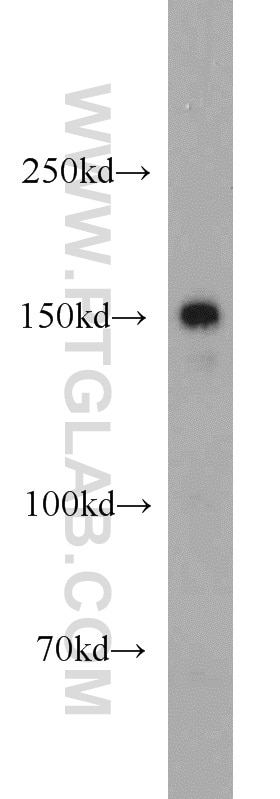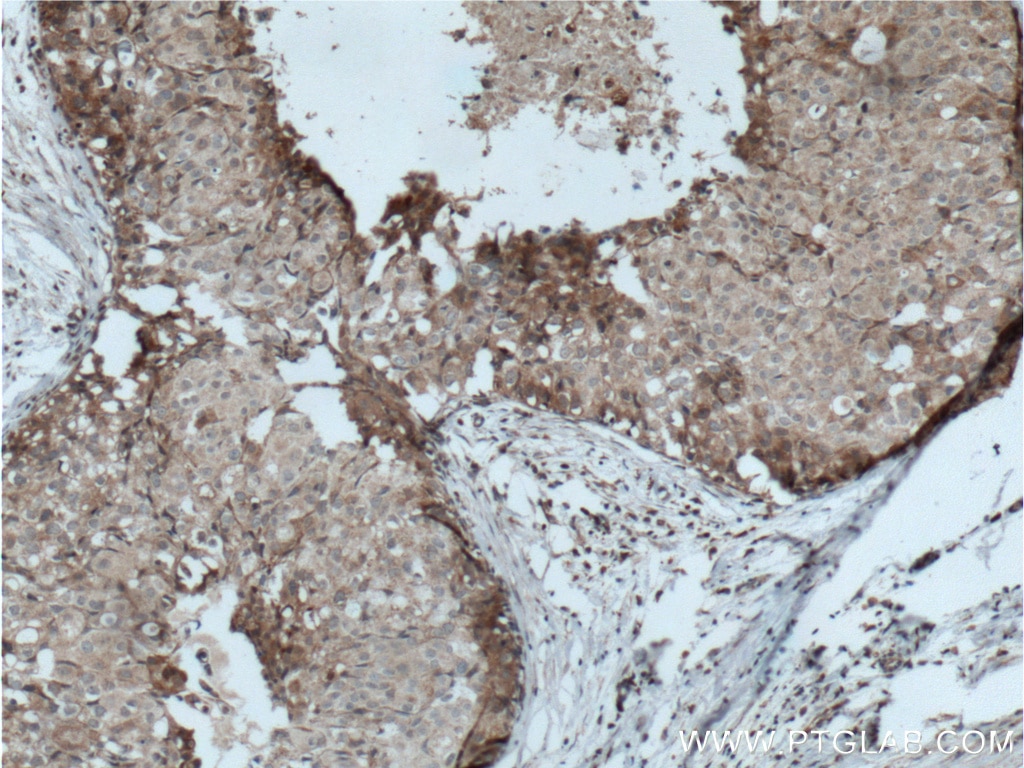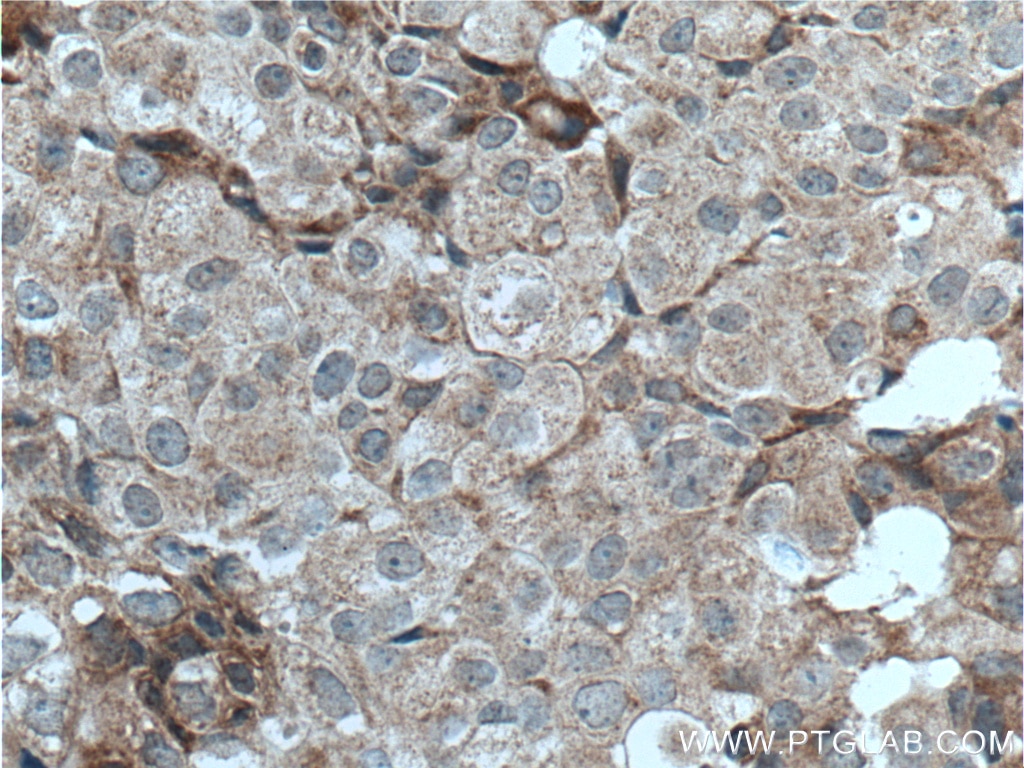LTBP1 Polyklonaler Antikörper
LTBP1 Polyklonal Antikörper für WB, IHC, ELISA
Wirt / Isotyp
Kaninchen / IgG
Getestete Reaktivität
human, Maus
Anwendung
WB, IHC, ELISA
Konjugation
Unkonjugiert
Kat-Nr. : 22065-1-AP
Synonyme
Geprüfte Anwendungen
| Erfolgreiche Detektion in WB | Mauslebergewebe |
| Erfolgreiche Detektion in IHC | humanes Mammakarzinomgewebe Hinweis: Antigendemaskierung mit TE-Puffer pH 9,0 empfohlen. (*) Wahlweise kann die Antigendemaskierung auch mit Citratpuffer pH 6,0 erfolgen. |
Empfohlene Verdünnung
| Anwendung | Verdünnung |
|---|---|
| Western Blot (WB) | WB : 1:500-1:1000 |
| Immunhistochemie (IHC) | IHC : 1:50-1:500 |
| It is recommended that this reagent should be titrated in each testing system to obtain optimal results. | |
| Sample-dependent, check data in validation data gallery | |
Produktinformation
22065-1-AP bindet in WB, IHC, ELISA LTBP1 und zeigt Reaktivität mit human, Maus
| Getestete Reaktivität | human, Maus |
| Wirt / Isotyp | Kaninchen / IgG |
| Klonalität | Polyklonal |
| Typ | Antikörper |
| Immunogen | LTBP1 fusion protein Ag17141 |
| Vollständiger Name | latent transforming growth factor beta binding protein 1 |
| Berechnetes Molekulargewicht | 1721 aa, 187 kDa |
| Beobachtetes Molekulargewicht | 150 kDa |
| GenBank-Zugangsnummer | BC130289 |
| Gene symbol | LTBP1 |
| Gene ID (NCBI) | 4052 |
| Konjugation | Unkonjugiert |
| Form | Liquid |
| Reinigungsmethode | Antigen-Affinitätsreinigung |
| Lagerungspuffer | PBS with 0.02% sodium azide and 50% glycerol |
| Lagerungsbedingungen | Bei -20°C lagern. Nach dem Versand ein Jahr lang stabil Aliquotieren ist bei -20oC Lagerung nicht notwendig. 20ul Größen enthalten 0,1% BSA. |
Hintergrundinformationen
Latent Transforming Growth Factor Beta Binding Protein 1 (LTBP1) is a large extracellular matrix protein that belongs to the latent TGF-beta binding protein family. It plays a crucial role in the regulation of TGF-beta, a multifunctional cytokine involved in various cellular processes such as cell growth, differentiation, and immune response. LTBP1 is essential for TGF-beta folding, secretion, matrix localization, and activation. It forms latent complexes with TGF-beta by covalently binding the TGF-beta propeptide (LAP) via disulfide bonds in the endoplasmic reticulum. This complex is then secreted and targeted to the extracellular matrix, where TGF-beta can be activated by various mechanism
Protokolle
| PRODUKTSPEZIFISCHE PROTOKOLLE | |
|---|---|
| WB protocol for LTBP1 antibody 22065-1-AP | Protokoll herunterladen |
| IHC protocol for LTBP1 antibody 22065-1-AP | Protokoll herunterladenl |
| STANDARD-PROTOKOLLE | |
|---|---|
| Klicken Sie hier, um unsere Standardprotokolle anzuzeigen |




